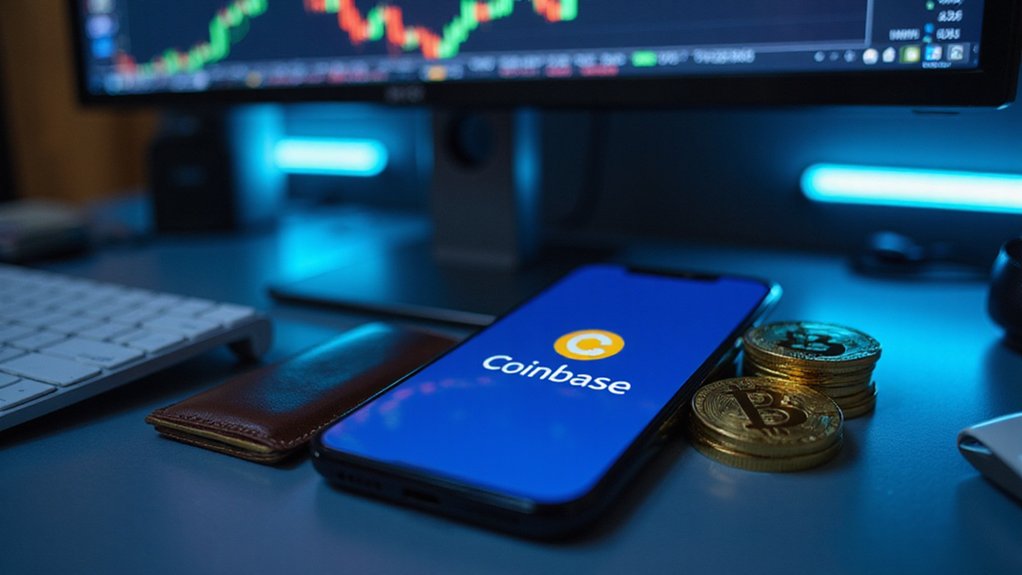EigenLayer is Ethereum’s evolutionary leap in staking infrastructure, introducing “restaking” as a cryptoeconomic primitive that allows validators to secure multiple protocols simultaneously using their already-staked ETH. This elegant solution addresses trust fragmentation in the ecosystem while creating a marketplace for rehypothecated stake. Validators enjoy multiplied earning potential through supplementary yields, while emerging protocols gain access to Ethereum’s robust security foundation—potentially up to $25 billion in collective stake. The implications for Web3’s security landscape are just beginning to unfold.

EigenLayer, an innovative protocol built atop Ethereum’s infrastructure, represents perhaps the most significant evolution in staking mechanics since Ethereum’s shift to proof-of-stake. At its core, EigenLayer introduces “restaking”—a cryptoeconomic primitive that allows ETH already staked on Ethereum to simultaneously secure multiple protocols without requiring unstaking. This elegant solution addresses the persistent problem of trust fragmentation across the Ethereum ecosystem, effectively creating a marketplace where staked ETH can be rehypothecated to provide pooled security for ancillary services.
The mechanism functions by enabling validators to commit their staked ETH to EigenLayer, which then serves as collateral for additional validation tasks beyond Ethereum’s core consensus. This multiplies both utility and earning potential—validators receive not only their base Ethereum staking rewards but supplementary yield from these additional services. Users depositing ETH or liquid staking tokens receive liquid restaking tokens (LRTs) in return, preserving access to DeFi opportunities while their assets work double-duty in the security apparatus. The platform bridges critical gaps in the Web3 ecosystem by aligning incentives between asset holders seeking rewards and service operators. Unlike traditional Proof of Work systems, this approach offers an energy efficient alternative while maintaining robust security guarantees.
EigenLayer’s security model extends Ethereum’s existing slashing conditions into a more robust framework. While Ethereum can directly slash only up to 50% of staked ETH for malfeasance, EigenLayer’s design creates an over-collateralization model that puts the remaining 50% at risk—making dishonest behavior prohibitively expensive. This elegantly aligns incentives toward honest validation across all secured protocols. The system creates a potential security foundation of up to 25B in stake that can be leveraged across multiple protocols simultaneously.
The practical implications of this architecture are profound. Emerging protocols can access Ethereum’s security without establishing their own costly validator networks. Additional validator services (AVSs) can leverage the pooled ETH collateral to secure new chains or services. Perhaps most intriguingly, EigenLayer supports “intersubjectively attributable faults”—situations where an operator is deemed malicious based on reasonable consensus rather than strict cryptographic proof. By lowering barriers to entry and creating a shared security foundation, EigenLayer potentially enables new scalability paradigms and interoperability mechanisms while maintaining Ethereum’s fundamental security guarantees.
Frequently Asked Questions
How Secure Is Eigenlayer Compared to Traditional Staking?
EigenLayer potentially offers enhanced security compared to traditional staking through its innovative approach to asset utilization.
By enabling ETH stakes to secure multiple protocols simultaneously (rather than sitting idly in a single validation pool), it creates a more efficient security apparatus.
The protocol’s key slashing mechanisms and accountability features provide robust protections, while its leverage of Ethereum’s existing security infrastructure potentially reduces the vulnerabilities inherent in building security pools from scratch.
Can Eigenlayer Be Used With Any Cryptocurrency?
EigenLayer primarily supports Ethereum-based assets—native ETH, liquid staking tokens (LSTs like stETH), and its native EIGEN token.
Custom ERC20 tokens can participate if integrated via EigenLayer’s smart contracts, but non-Ethereum cryptocurrencies (Bitcoin, Solana assets) require bridging solutions.
The platform’s architecture demands EVM compatibility and programmable slashing mechanisms, creating natural limitations for cross-chain integration.
Stablecoins like DAI or USDC lack native support unless wrapped as compatible ERC20s with appropriate slashing logic.
What Fees Are Associated With Eigenlayer Staking?
EigenLayer staking involves several fee considerations: a 10% operator fee (specifically for Everstake), gas costs accounting for approximately 30% of annual staking rewards when native restaking, and transaction costs calculated at around 35 Gwei.
The operational overhead differs substantially between liquid staking (relatively streamlined) and native restaking (more complex, requiring validator proving and reward skimming).
While liquid staking demands minimal maintenance, native restakers must factor in recurring gas expenditures for validator operations.
How Does Eigenlayer Handle Slashing Conditions?
EigenLayer implements slashing conditions through a customizable framework where AVS builders design their own policies via governance mechanisms.
This system allows for tailored conditions based on strategy and allocated stake, with safety delays ensuring protocol adherence before penalties occur.
Operators—who organize into sets defining slashable security parameters—can allocate unique stakes to isolate risks.
Originally tested on Holesky Testnet, this mechanism addresses previous safety concerns about leverage while completing EigenLayer‘s vision of robust cryptoeconomic accountability.
What Are the Minimum Requirements to Participate in Eigenlayer?
To participate in EigenLayer, users generally need 32 ETH for direct staking or can utilize liquid staking tokens for those with less capital.
Early participants received 10 EIGEN tokens as recognition.
For specialized roles, EigenDA operators face reduced requirements—now 96 ETH, down from 320 ETH.
Participation involves selecting “EigenLayer ETH Restaking” on supported platforms, committing funds, and acknowledging associated risks.
The tiered requirements reflect EigenLayer’s attempt to balance network security with accessibility across different participant categories.









